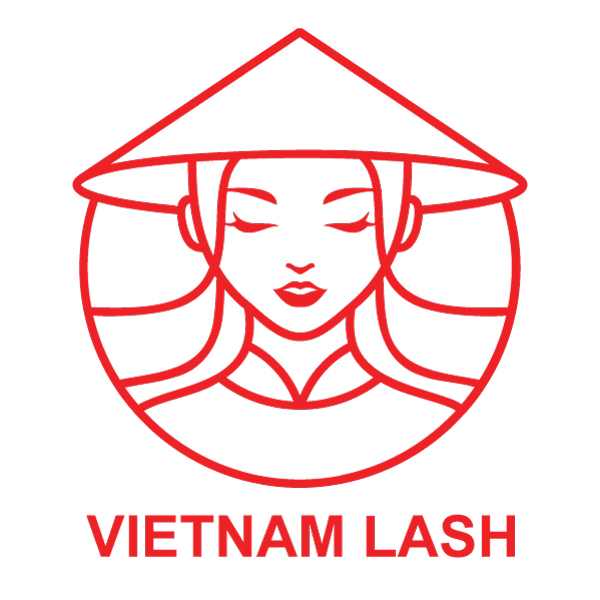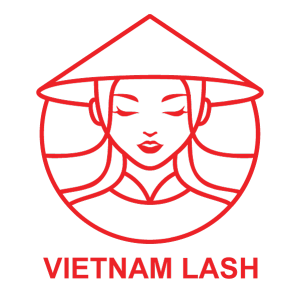Hey there, beauty aficionados! Today, let’s talk about something that’s not often in the spotlight but can really be a nuisance when it rears its tiny head: ingrown eyelashes. Yep, those pesky little strands that decide to take a detour and grow inward instead of outward can be a real pain. But fear not, because we’re diving deep into the world of ingrown eyelashes, exploring why they happen, how to prevent them, and what to do if you’re already dealing with one. So, grab your favorite skincare treats, settle in, and let’s get started on this beauty journey together!
What Is An Ingrown Eyelash?
Probably a picture of ingrown hair that is trapped and developing under the skin comes to mind when you think of ingrown hair. Although it’s unusual, this can happen to eyelashes. An ingrown eyelash, on the other hand, refers to that lash that emerges through the skin in the opposite direction—that is, toward the eye.
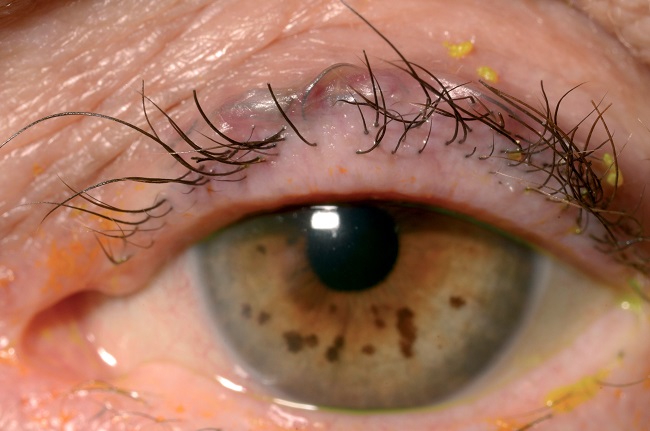
An ingrown eyelash (trichiasis) is a frequent condition of the eye that results in aberrant lash growth. An ingrown eyelash grows inward toward the eye rather than outward and might feel like a needle piercing into your eye since eyelashes are typically quite coarse. This may hurt and irritate you. An untreated ingrown eyelash can even cause damage to your eyes. An ingrown eyelash often affects either the upper or lower eyelids, and is more prevalent in adults. Since ingrown hair on the eyelid rubs against your eyes, it causes the following symptoms: eye pain, irritation, irritated eyelids, eyelid swelling and inflammation, watery, itchy, red eyes, photophobia, a gritty feeling in the eye, eye infections (stye-like bump on the edge of the eyelid), eye discharge (mucus or pus), blurry vision, and even vision loss (in severe cases).
What Causes Ingrown Hair on Eyelids?
Most of the time, trauma, inflammation, or conditions affecting the eyelid are the main causes of an ingrown eyelash. There are also over-the-counter remedies for the symptoms, but the practice of removing them is the only way to effectively treat trichiasis, and stop severe pain and irritation to a significant extent. Blepharitis is another common reason for an ingrown eyelash. The germs on your face, skin diseases ( dandruff or rosacea), blocked oil glands, allergies, and, less frequently, eyelash mites, and so on, can all contribute to blepharitis and eyelash growth under the eyelid. Styes, painful, red pimples on the eyelid brought on by an infection, are still another offender. Any kind of inflammation of the eyelids does affect the skin around your eyes and even affect how your natural eyelashes grow in the long run if not timely treated.
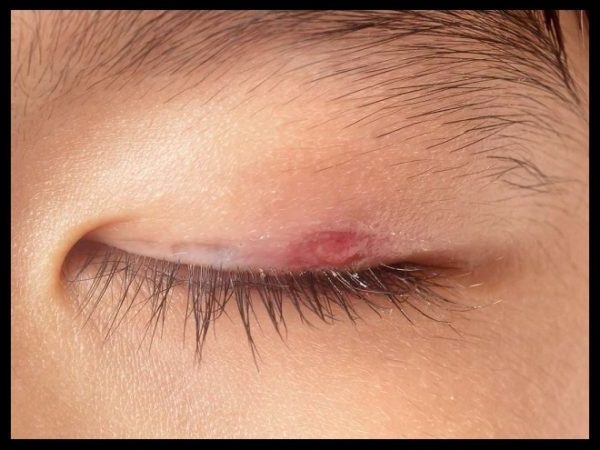
The eyelashes may grow improperly or in the wrong direction due to other eye diseases like:
- Ectropion: A condition when the eyelid loses its natural suppleness and flips or folds in. Adults are more likely to experience this, which is frequently correlated with aging or obesity.
- Injury: The eyelash’s position may change and grow inward if the eyelid is ripped or damaged. That is to say, surgical repair of a damaged eyelid will also result in an ingrown eyelash.
- Distichiasis: This disorder causes an extra row of eyelashes to grow and develop inside, scraping against your eye.
- Entropion: When this happens, your lashes rub against the eyeball as the eyelid turns inward. Entropion will damage your cornea and leave scars if it continues. Inflammation has a side effect, which is just like that.
- Developmental Changes: As a child grows, the shape of their lashes and hair follicles may momentarily shift. Trichiasis, as a result, is typically transient.
Prevention is Key: Tips to Keep Ingrown Eyelashes at Bay
As the saying goes, an ounce of prevention is worth a pound of cure. While we can’t always guarantee that ingrown eyelashes won’t pop up uninvited, there are some steps you can take to minimize their occurrence:
- Be Gentle: Treat your delicate eye area with care. Avoid rubbing or pulling at your lashes, and be cautious when removing eye makeup.
- Good Hygiene: Keep your eye area clean by regularly washing your face and removing makeup before bedtime. Cleanse gently with a mild, eye-safe cleanser to avoid irritation.
- Avoid Harsh Products: Speaking of makeup, opt for gentle, hypoallergenic products around the eye area. Harsh chemicals can irritate the skin and increase the likelihood of ingrown lashes.
- Proper Makeup Removal: Make sure to remove all traces of eye makeup before hitting the hay. Use a gentle eye makeup remover and follow up with a thorough cleanse to ensure your lashes are free from product buildup that could trap them.
- Regular Eye Exams: Keep up with your eye health by scheduling regular check-ups with your eye doctor. They can catch any potential issues early on and provide guidance on how to keep your peepers in tip-top shape.
How to Treat Ingrown Eyelashes: What to Do If You’re Already in a Pickle
Despite our best efforts, sometimes those sneaky ingrown lashes manage to make an appearance anyway. But fear not, my fellow beauty enthusiasts, because there are ways to deal with them:
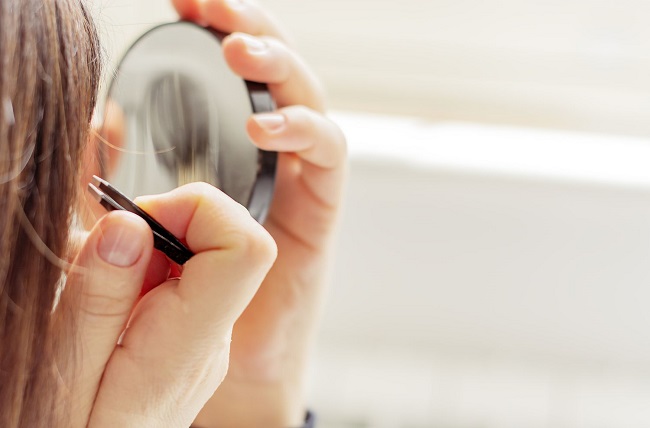
1. Epilation
Using a pair of eyelash tweezers, anyone can perform this. Online or through your GP, you’ll have a list of the branches that provide this treatment. Unfortunately, since eyelashes regrow eight weeks apart, plucking (or epilation) is always vital. Some people find that after routine plucking, their lashes do grow back completely or less often.
2. Warm Compress
To ease inflammation and encourage the ingrown lash to loosen, apply a warm compress to the affected eye for several minutes. This can help soothe discomfort and facilitate the lash’s release.
2. Surgery
Your doctor can remove the problematic area and individual eyelashes with a delicate metal device if an ingrown eyelash only affects a small portion of your eyelid. They will cut up your eyelid to expose the eyelash roots and freeze them to prevent them from growing back, but only if a larger portion of your eyelid is damaged. The name of this process is cryotherapy, and your eyes’ color may change, and the edge of your eyelid may appear a little crooked. After all, you’ll be made sure not to experience any pain or discomfort prior to every procedure, although you may still feel a touch or a sense of pressure.
3. Electrolysis
Only when there are a few ingrown eyelashes is electrolysis a lasting solution to inhibit the regrowth of your ingrown eyelashes. Your doctors will wait to make an electrolysis appointment if you recently plucked your eyelashes since the procedure can only be performed on visible lashes. For the eyelashes growing into the eye to be permanently removed, the surgery is done multiple times, typically two to three rounds. You can use electrolysis to get rid of an ingrown eyelash. To stop the hair from growing back, a physician will electrically harm the follicle, which can take several rounds. Only 19% of the targeted eyelashes returned after laser hair removal, with a success rate of 81%. Electrolysis had a 49% first-time success rate, with 63% of the eyelashes growing back.
4. Bandage Contact Lens
To speed up the healing process and shield the cornea from unattended ingrown eyelashes, a soft bandage contact lens can be placed on the eye of the patient. You may suffer more or less discomfort and a longer or shorter healing period, depending on the treatment you choose to receive or not. It’s likely that certain treatments are more painful than others, and even take a longer period of time for the patient to recover. >> Explore further to gain insights into potential eye conditions:
- How To Get Rid Of Bags Under Eyes For Your Undying Beauty
- What Are Double Eyelashes? Let’s See How Rare They Are!
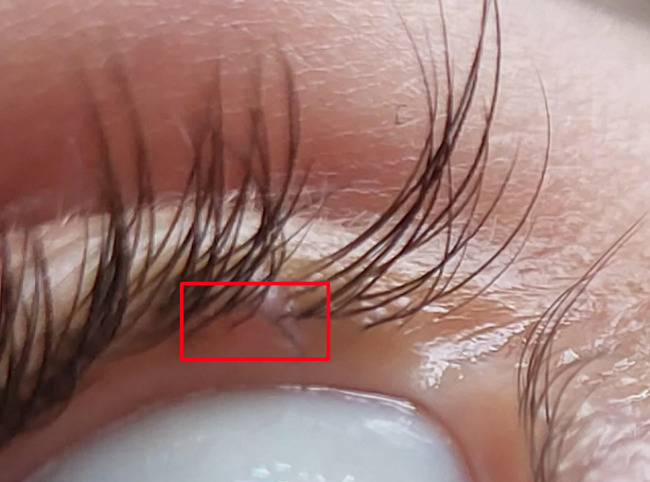
FAQs
Do Ingrown Eyelash Surgeries Come With Risks Or Side Effects?
You might suffer a little swelling, bruising, and pain around your eye – these side effects can be treated with paracetamol. Since there is a slight chance of infection, you should use an antibiotic drop or cream for a few days, following the surgery. If the roots weren’t entirely removed after your operation, your ingrown eyelashes may come back. You would need more surgery or medical care, as a result, if that happened.
What Items Can Be Used To Treat Mild Cases Of Ingrown Hair On Eyelid?
Eye drops (ideally with medium to high thickness to ensure they successfully remain on your eye), ointments (which work well to protect the eye at night while sleeping but blur the vision during the day), or a warm compress, which can provide relief, can be used to deal with mild cases of an ingrown eyelash at home.
How To Prevent An Ingrown Eyelash From Occurring To Lashes?
Taking care of your eyes does help reduce the chance of getting an ingrown eyelash. Those eye health habits include using gentle, non-irritating products (face wash and shampoos) as well as washing your face often, avoiding touching your face or eyes, washing your contacts frequently, and, especially, not wearing them for too long.
Conclusion
While ingrown eyelashes may not be the most glamorous topic in the world of beauty, they’re certainly a reality for many of us. By understanding why they happen and taking proactive steps to prevent them, we can minimize their occurrence and keep our eyes looking and feeling their best. And remember, if you find yourself dealing with an ingrown lash, don’t hesitate to seek help from a professional. Your eyes deserve the best care possible, so treat them with the love and attention they deserve. Stay fabulous, my friends, and may your lashes always be long, lush, and ingrown-free!
Excited to amp up your lash game and dive into the wonderful world of beauty? Explore vietnamlash.com for a wealth of lash expertise, beauty tips, and professional advice. Join us on the journey to luminous lashes and unparalleled beauty.
